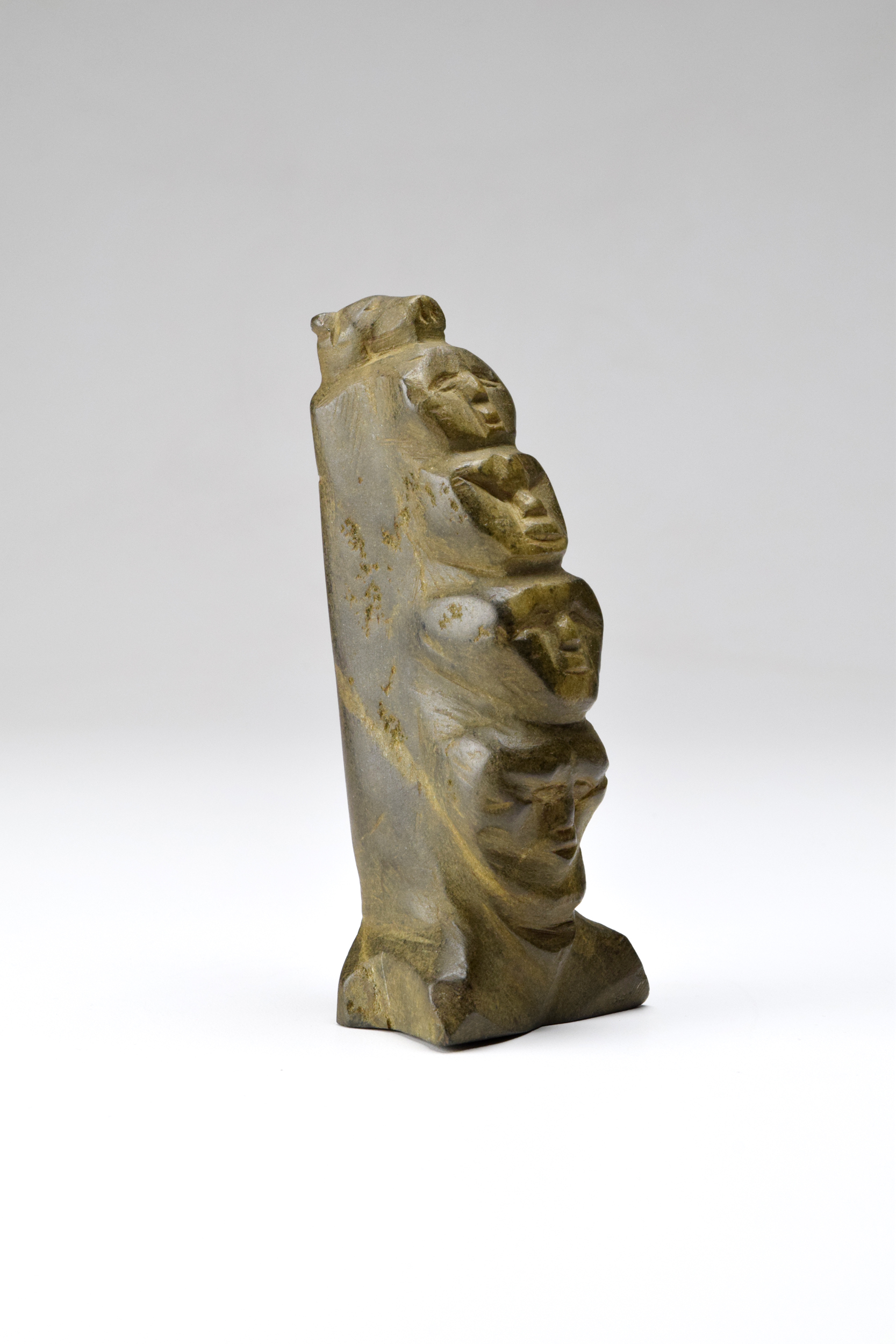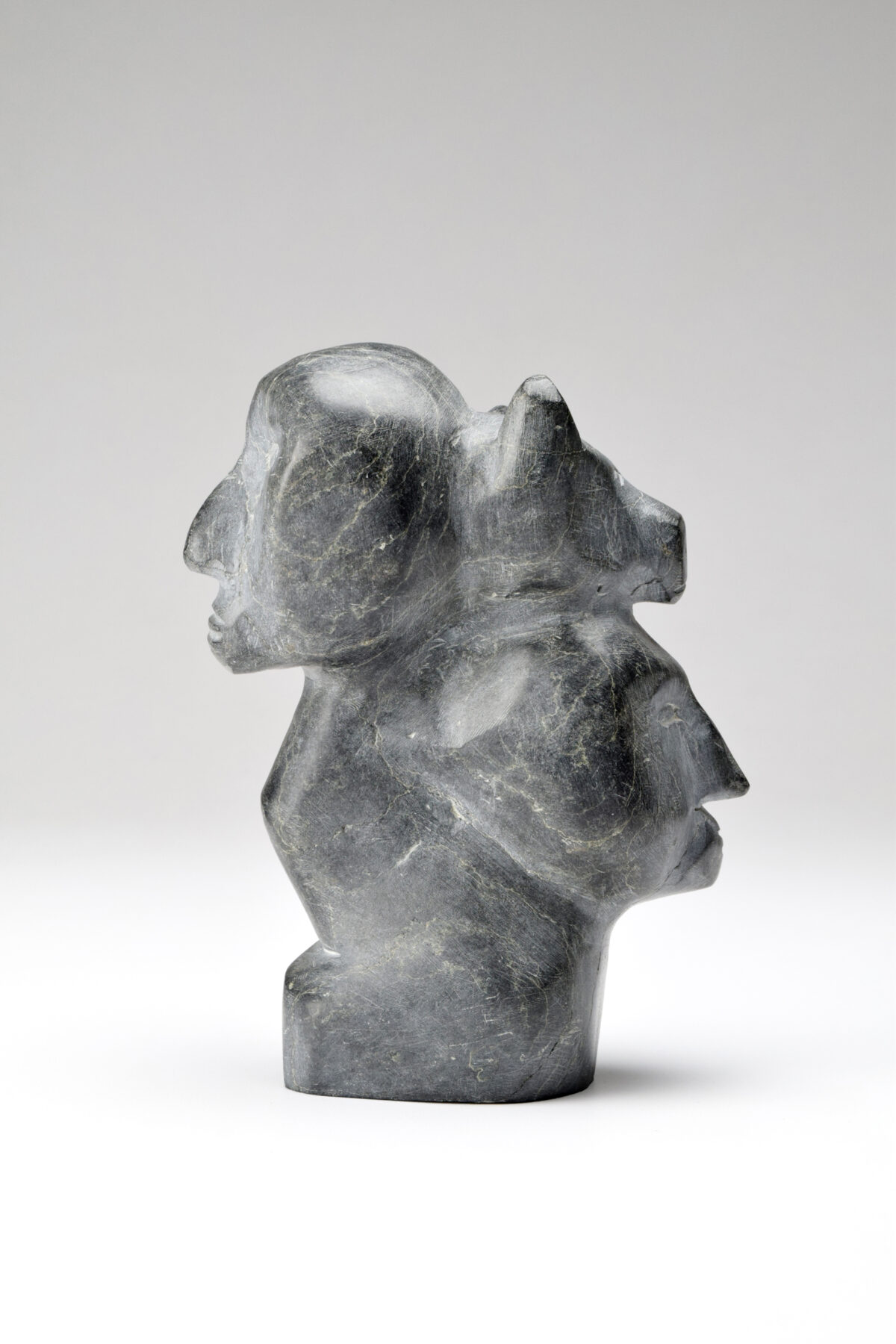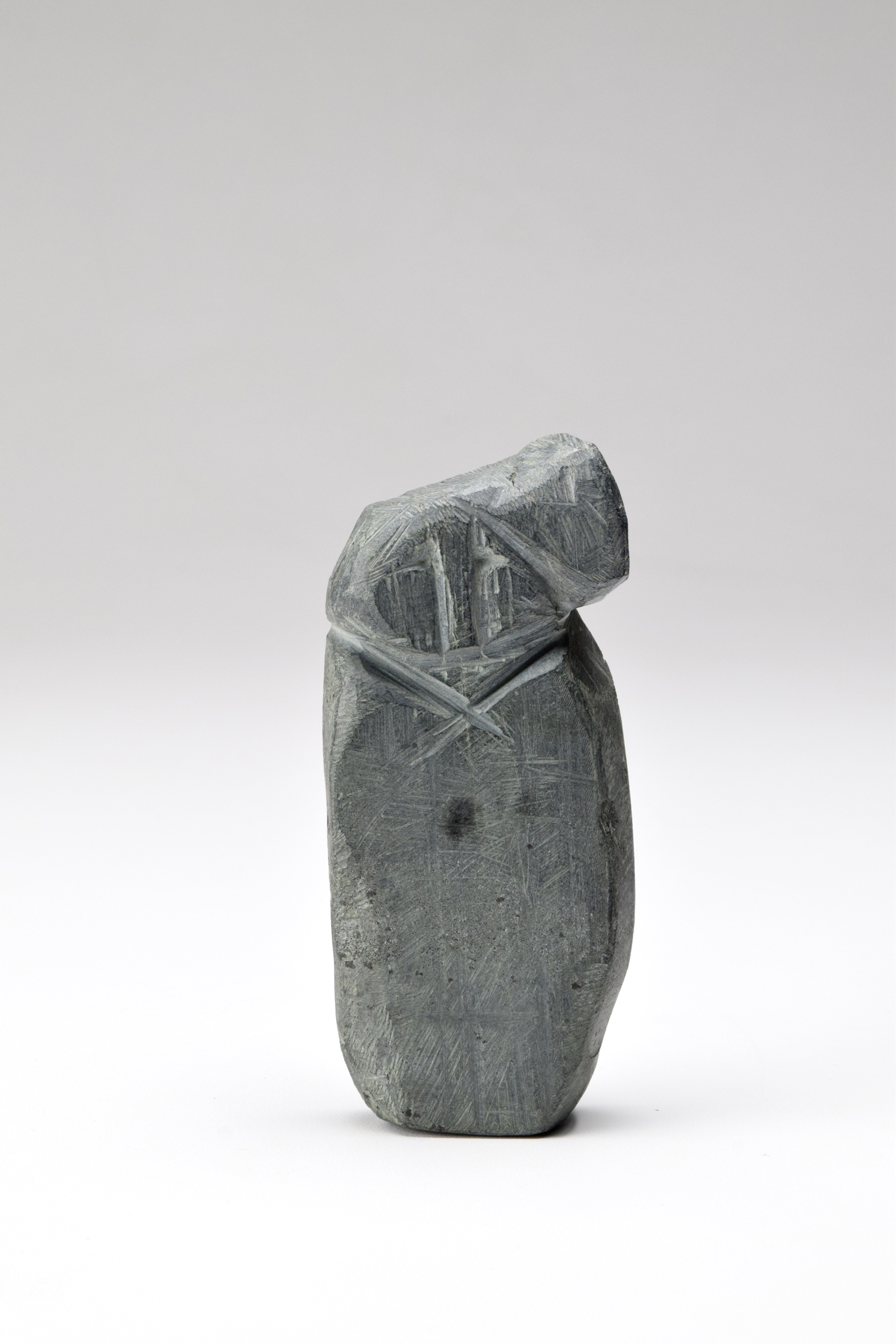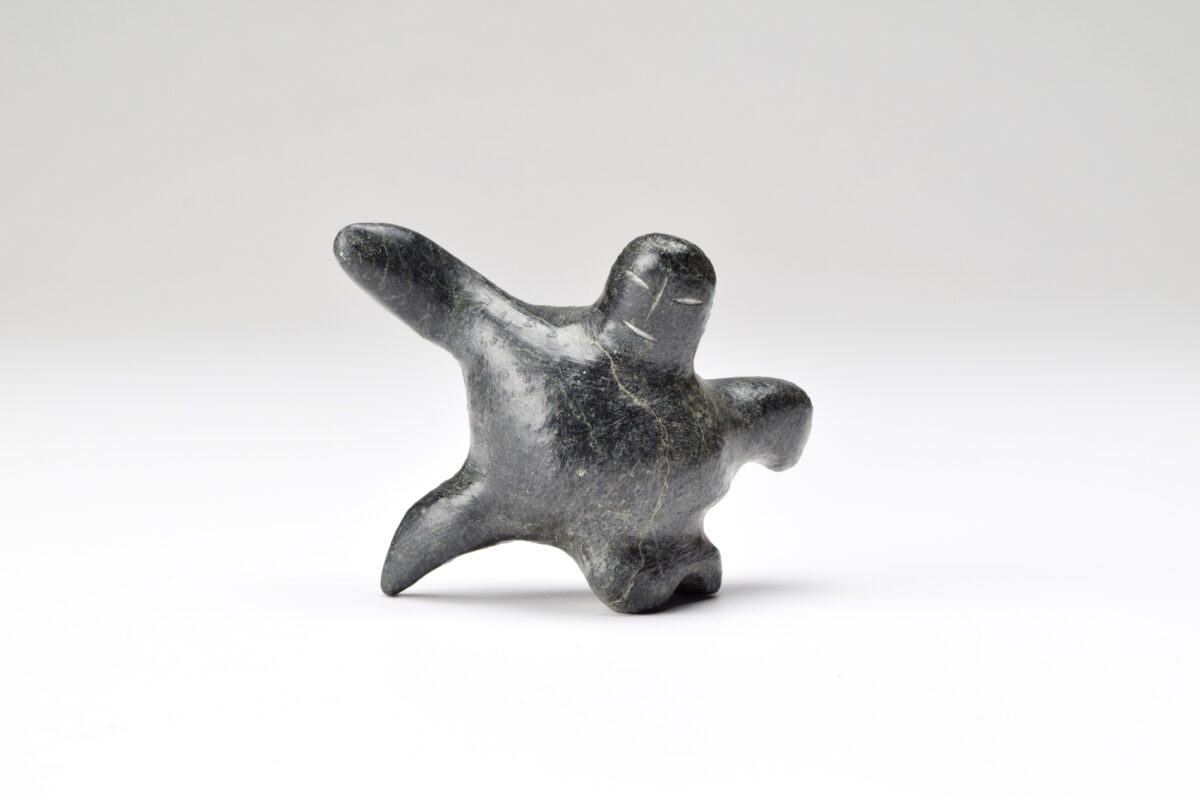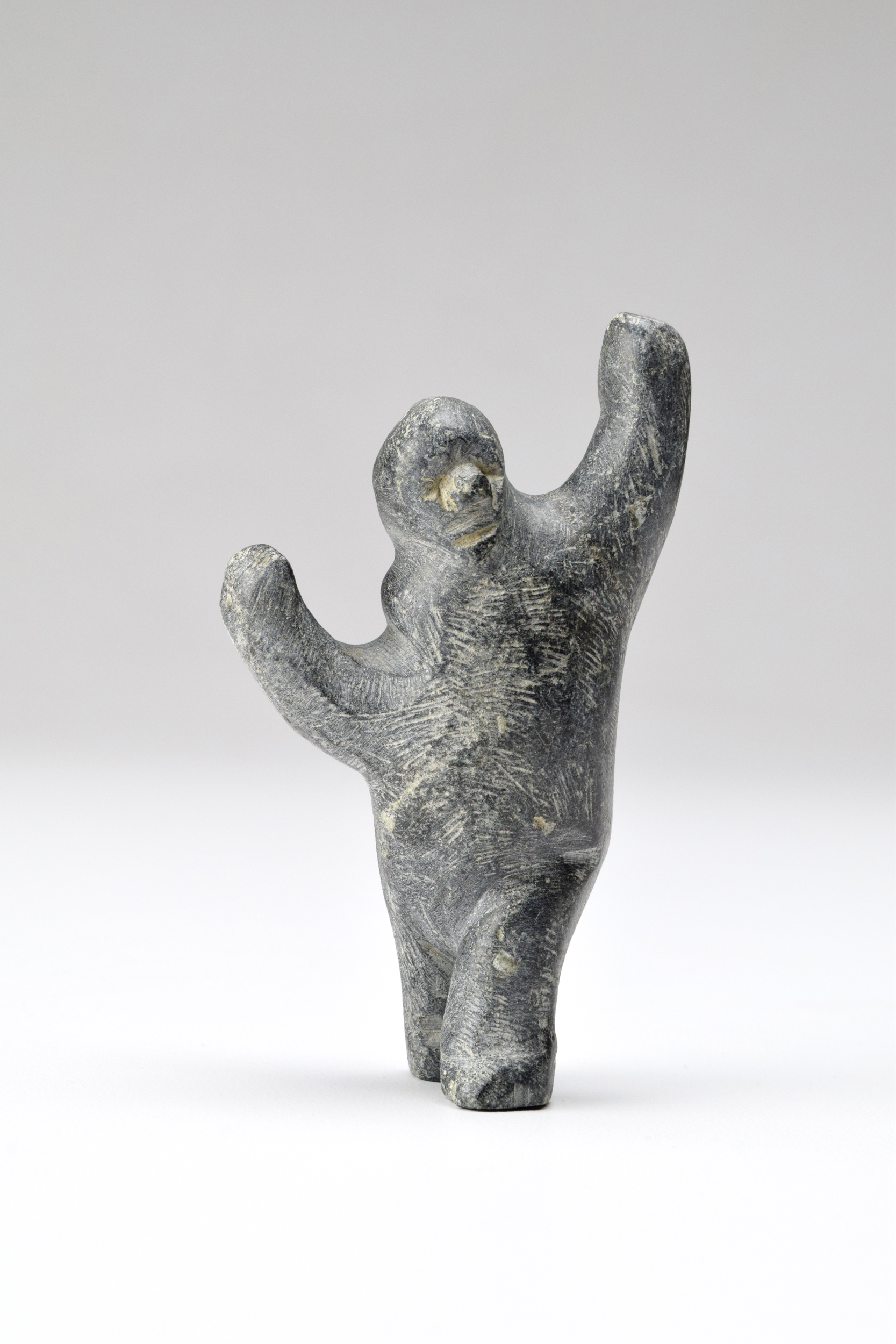Profile: Kangiqliniq
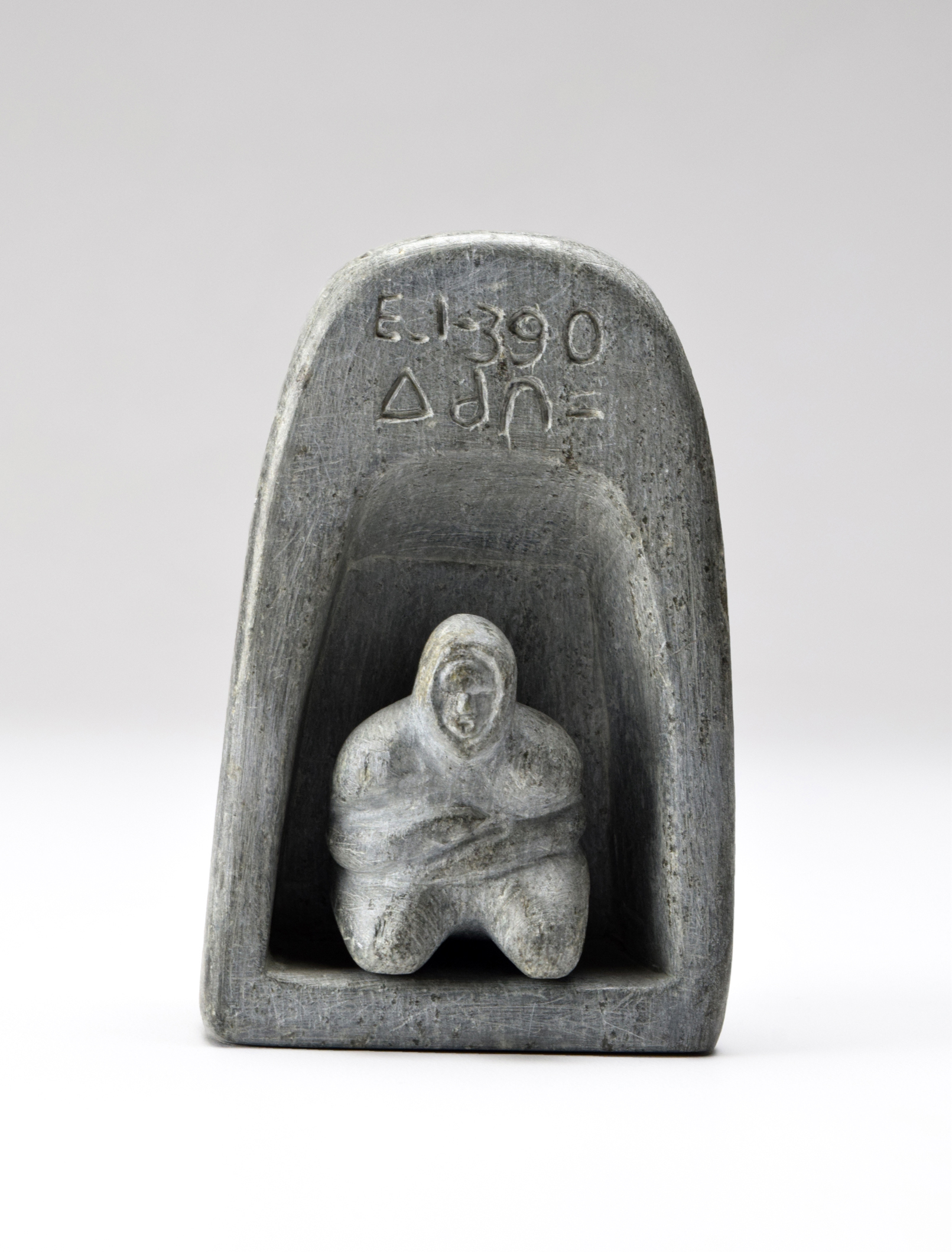
June 1 – 30
In the early 1960s, the coastal settlement of Kangiqlinik (also known as Rankin Inlet) emerged as an important centre for the production of Inuit sculpture. Home to the North Rankin Nickel Mine in the late 1950s, Inuit from several regions were drawn to the area by the promise of wage employment. The community’s regional diversity has been reflected in its artistic expressions, which range from abstract and raw to naturalistic and refined. If there is such a thing as a unifying Kangiqliniq sensibility, it has to do with the way its artists engage directly and sensitively with the physical properties of the mediums in which they work and give shape to their images, combined with a unique emphasis on the human form.
The profile includes a sculpture from the early 1960s by Nicholas Ikkuti, an innovative artist whose compositions are unique expressions of ideas that change with each new image. In this modestly-scaled work, Ikkuti portrays a figure in winter clothing kneeling inside the protective container-like form of what could be a hut or igloo, but looks like neither. In keeping with the composition’s unconventional conception, Ikkuti has inscribed his disc number and name in syllabics directly onto the stone’s surface at the front. On the enclosure’s back, Ikkuti has inscribed more Inuktitut syllabics, making this an early example of the rich Inuit tradition of combining text and image in the same work.
Animal imagery has been less common in sculpture from Kangiqliniq than in Inuit art from other communities and regions. An exception to this was Vital Okoktok, whose totemic compositions combine human faces with the heads of animals, expressive of a deep connection between people and the natural world. The profile features two works by this little known but important artist. In the first, a row of four human faces stacked one on top of the other culminates in the head of a bear (or dog) whose positioning at the peak gives it the status of a protector. In Okoktok’s second work, two human heads with carefully carved features face in opposite directions, joined together by an animal who also gazes out, a full member of the group.
One of Kangiqliniq’s best known artists is John Kavik, whose roughly hewn images are among the most recognizable forms in all of Inuit art. A remarkably versatile artist, Kavik’s most important subject was the female figure, invariably rendered wearing elegant hooded parkas that are inseparable from the people dwelling within their protective bulky forms. Kavik’s vertical sculpture of a woman from the mid 1970s epitomizes the artist’s reductive approach, contrasting flat and gouged surfaces with sensuous contours and volumetric silhouettes.
Although the majority of Kangiqliniq’s sculptors have been men, women have made important contributions to the field. Elizabeth Okalik’s sculpture depicting a broad-shouldered standing woman combines formal restraint with well-defined features, clothing details and volumes. Whereas Kavik’s images of women are abstracted and abbreviated, Okalik’s concept is more literal and naturalistic, highlighting the diversity of stylistic approaches that is a hallmark of figurative sculpture from Kangiqliniq.
In the mid 1960s, Kangiqliniq was home to an experimental pottery workshop, the first of its kind in the North. Many stone sculptors participated in the innovative program, giving rise to a unique facet of contemporary Inuit artistic expression. Of the two examples featured here, Toona Iquliq’s wafer-thin rendering of a flat round human face in clay reflects the project’s experimental nature, its unglazed surfaces evidence of the artist’s appreciation for the raw medium’s expressive properties. The second ceramic work, a shaman in a bird form by Eli Tikeayak, is glazed, but in a manner that preserves a convincing directness and boldness of expression.

